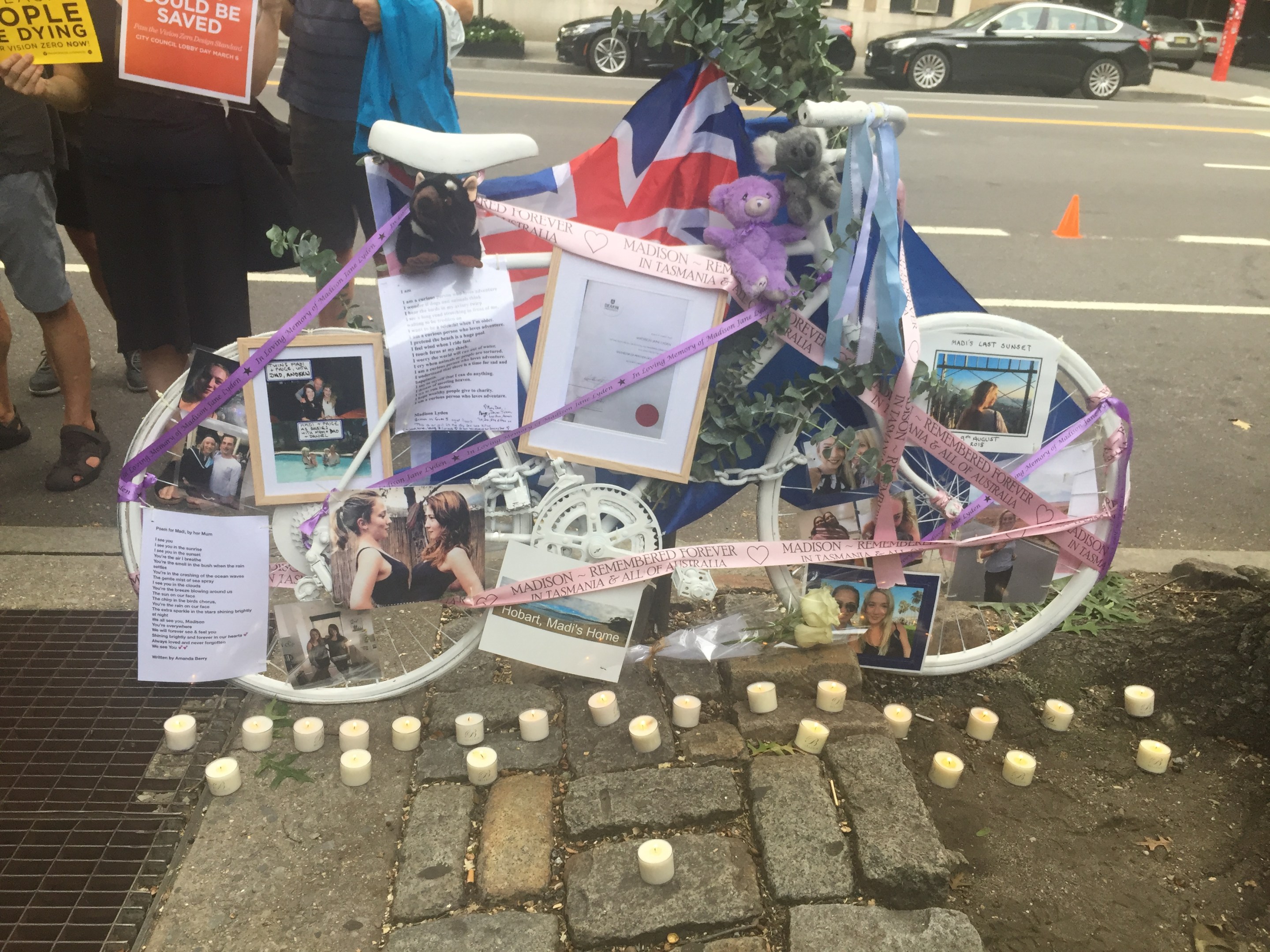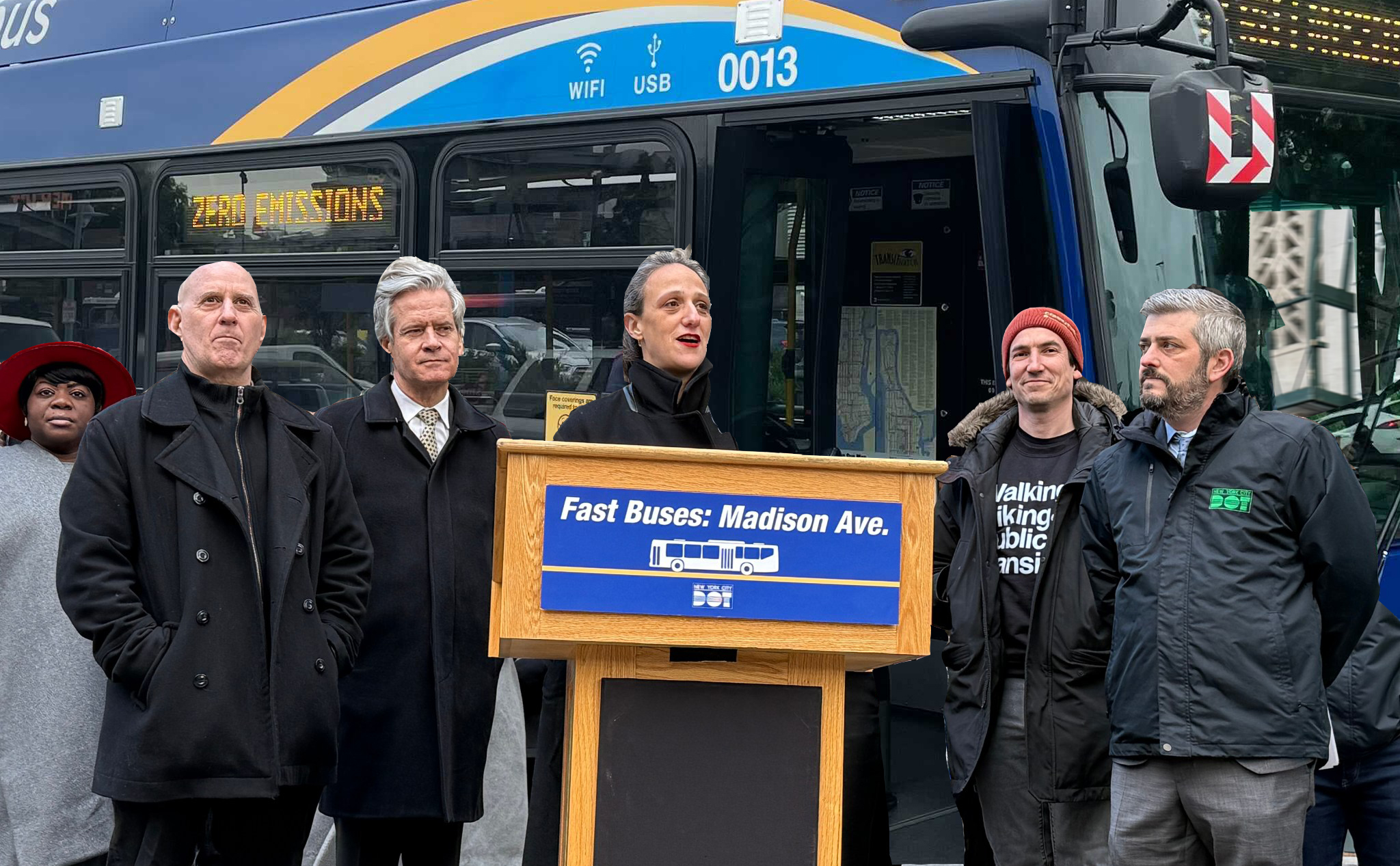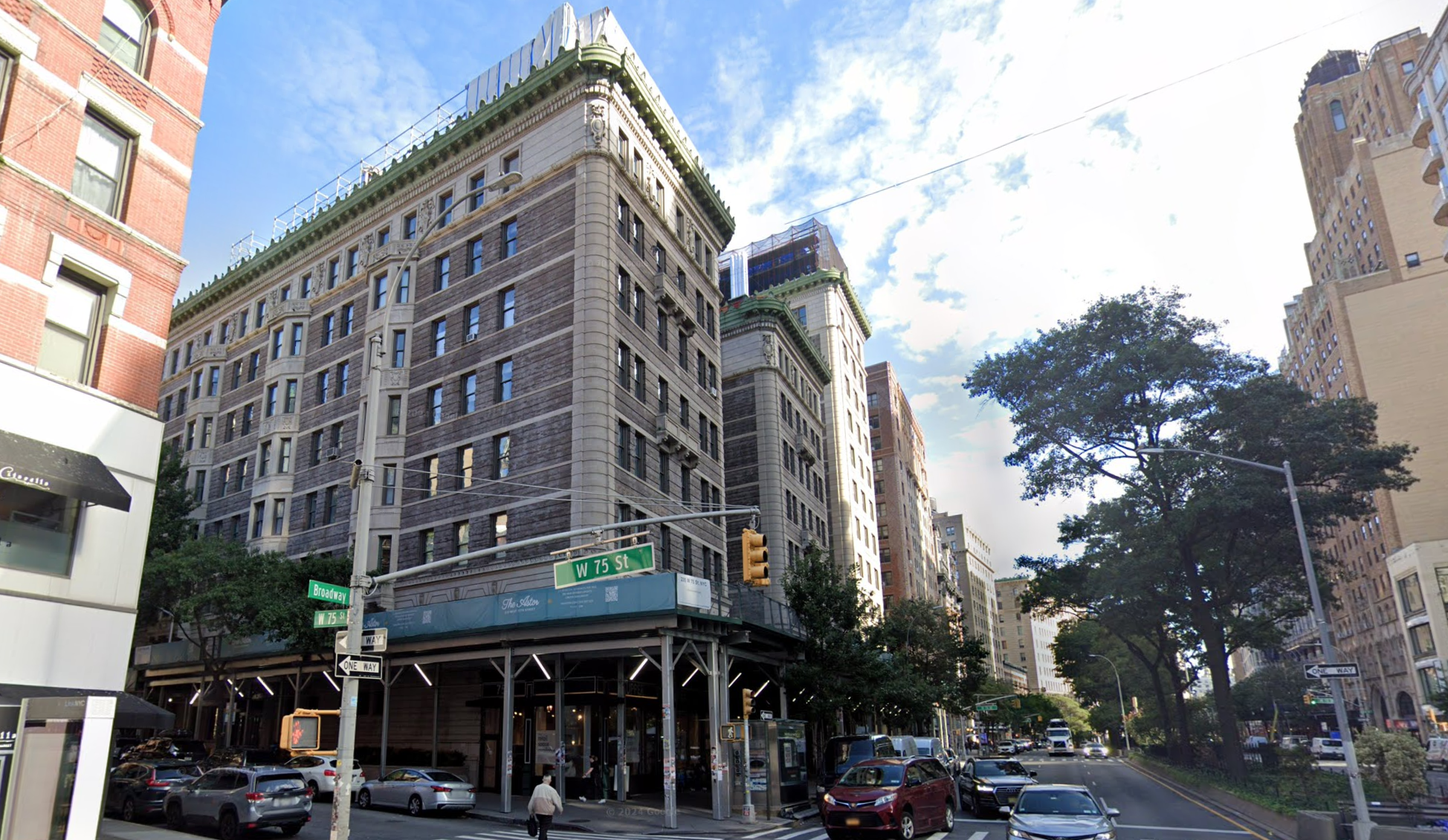It’s another battle won in the war against cars.
Central Park West is set to gain a protected bike lane — and to lose 400 parking spaces — after a key community-board committee voted Tuesday night to approve a controversial Department of Transportation proposal.
At a packed meeting on the Upper West Side, Community Board 7’s Transportation Committee voted unanimously to accept the DOT plan, which would put a northbound bike lane protected by flexible bollards on the east side of the two-and-a-half mile, two-way corridor — removing hundreds of spaces in the public right of way that are typically filled with private cars.
Community Board 7 had asked DOT for a protected lane after the death last August of young Australian cyclist Madison Lyden, who was killed by a truck driver after a cab forced her to veer out of the roadway's current painted bike lane into traffic.
The fatality galvanized board members, who pushed back fiercely at the dozen or so West Side residents who came to the meeting to oppose the protected lane because they would lose free car storage.
“When it comes to a tradeoff between parking and human life, there isn’t one,” said Transportation Chair Howard Yaruss.
The board had asked DOT to come up a two-way, north-south protected bike lane, but it appeared placated by the DOT proposal.
“This plan is substantial,” said board member Elizabeth Caputo. “Don’t let the perfect be the enemy of the good.”
Council Member Helen Rosenthal also spoke up for the plan, which she called “thoughtful” and “important.”
Manhattan Transportation Commissioner Ed Pincar told members that a two-way lane was not feasible or safe now because of the heavy volume of traffic on CPW and in the 65-66th Street, 79th Street, and 96th Street transverses through Central Park.
“A two-way bike lane creates almost another lane of traffic moving at 15 mph,” he said. Conflicts arise at turns and bus stops, he said, where some cyclists would be facing traffic “head on.”
But board member Ken Coughlin, who supports the proposal, asked DOT to revisit its plan after congestion pricing is instituted in 2021. With the promise of reduced car traffic, he said, it might be feasible to make CPW a one-way, northbound street, enabling a bike lane in both directions.
The committee liked that idea: Its resolution injected the idea of revisiting bi-directionality after a year of the lane’s operation and then a year after congestion pricing.
Chelsea Yamada, a Transportation Alternatives staffer, said she was “not surprised” that DOT had only come up with a one-way plan. “We can see the shortcomings of citywide leadership that wants to preserve car travel,” she said.
On the opposite side, a number of people who identified themselves as residents rose to condemn the proposal and demand more police enforcement against cyclists, who they said ride the wrong way in lanes, do not obey traffic lights, and commit other infractions.
But Deputy Inspector Timothy Malin, commander of the 20th Precinct, strongly suggested that bicyclists are not the problem. There have been 693 collisions year-to-date in the precinct, he said, and 97 percent of them involved automobiles. Only 3.3 percent involved bikes, and his officers had written 3.07 percent of their summonses to cyclists.
“I’m very comfortable where our enforcement is now,” he said.
He added that, while it was not his role to advocate for a protected bike lane, more safety is needed on CPW. With so many cabs on the thoroughfare, “It’s so unsafe. It's not a matter of if there's going to be another Madison Lyden. It's a matter of when."
DOT’s plan, presented to the board by Pincar and Bike Program Director Ted Wright, envisions a northbound protected lane and other measures for improving safety, including:
- Right- or left-turn lanes at cross streets along the corridor;
- A leading pedestrian interval of 10 seconds at crosswalks;
- A ban on left turns at 96th Street; and
- Buffers around bus stops so that cyclists can get around them comfortably.
DOT said it could begin constructing the lane is this summer, and the project likely would not conclude until 2021. The full board will vote on the proposal on July 2.






